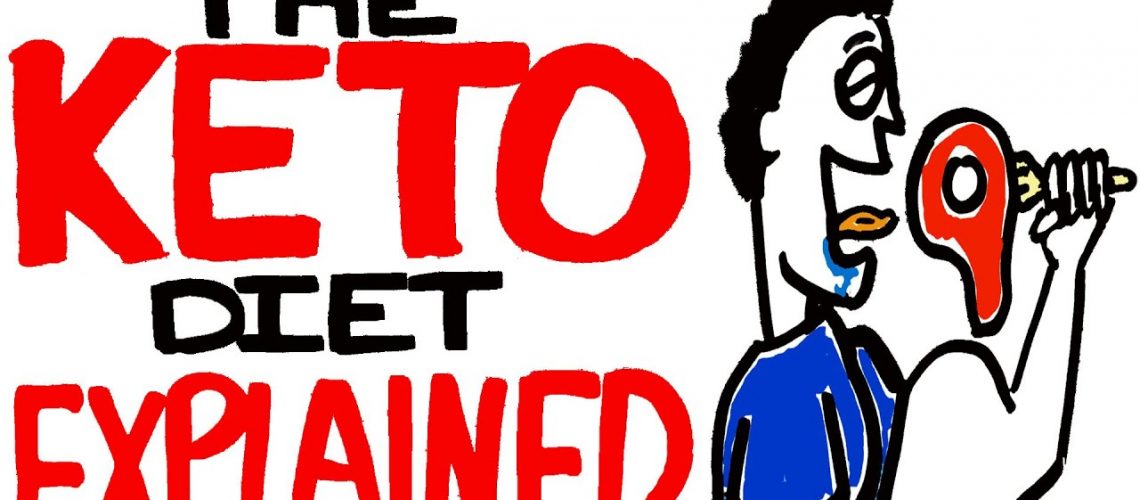The Ketogenic Diet is a widely popular diet that stuck through longer than many of the fad diets that come and goes. So what's so special about this diet?
Videos by PictureFit & OnePercentBetter
Key Takeaways
The keto diet, another typical fad diet? Actually, it’s been around for a while now, and people are getting some pretty good results from it. So what exactly is so different?
Well, most of these fad diets you find simply tells you to eat this certain type of food and avoid those certain type of food and voila, you’re on your way to losing a hundred pounds! Of course, a lot of them don’t really work and makes very little sense.
What’s special about the keto diet, short for ketogenic, is that it changes how your body feels, and most importantly, how your body uses energy by placing you into a state known as ketosis. And this is where all the magic happens.
In ketosis, your body starts utilizing substances known as ketone bodies, which are produced by the breakdown of your body fat triglycerides. Quick science, first understand that your body loves glucose. If it has glucose on hand, it’s going to use that first for energy.
In a keto diet, the amount of carbohydrates you consume goes down, therefore, the amount of glucose goes down, too. In order to combat this, your body uses stored glucose in the form of glycogen, but then that’s going to run out as well.
The next step is to convert a substance known as oxaloacetate in the liver into glucose. At the same time this is happening, your body is breaking down your fat into free fatty acids and sending it to your liver to metabolize another important substance known as acetyl CoA.
Acetyl CoA is then placed into the Krebs cycle in the liver cells to produce energy. But it can’t do that right now. Remember that oxaloacetate that was being broken down into glucose? Well, oxaloacetate is also needed for the Krebs cycle to function.
Now your liver has all of these acetyl CoA lying around so it decides to break it down into two substances called acetoacetate and beta-hydroxybutyrate, which are known as ketone bodies. It sends them into the bloodstream where other body cells pick them up, convert the ketone bodies back into acetyl-CoA, into Krebs cycle, and energy is produced!
This is also really good news for your brain, since even though your brain loves glucose, too, it can function on ketone bodies as well. In fact, ketone bodies provide more energy per gram for the brain versus glucose, so win-win for your mental capacity!
Now so far, everything sounds good. Your body no longer relies heavily on carbohydrates, it burns a lot of fat, and your brain functions pretty well. But of course, there’s always a catch.
Studies show that power output decreases in cases where maximum intensity is required. This makes sense because the breakdown of glucose via glycolysis, plays a crucial role in providing immediate energy for your body.
With no glucose and glycogen in your body, intense workouts become a lot harder. And the lack of glycogen also affects muscle growth, since there is a strong positive connection between glycogen availability and protein synthesis. Take the glycogen away, and the process slows down.
There’s also the keto flu, something that happens when your body starts transitioning off of carbs and rely more heavily on ketone bodies.
- The “keto flu,” which isn’t an actual flu, contains symptoms such as headaches, fatigue, coughing, nausea, and even upset stomach. The positive note, though, is that it passes quite quickly and won’t come back again unless you come out of ketosis.
The keto diet is also very food restrictive.
- A conventional diet has you eating roughly 20% fat, 30% protein, and 60% carbs.
- The keto diet, on the other hand, shifts you all the way to 70% fat, 25% protein, and 5% carbs, or below 30 grams. That’s a huge change that some people just cannot do.
Cutting out so many carbs is easier said than done. This is a huge battle itself, and a lot of times, a losing battle. But even with the drawbacks, people still advocate for it.
The reason that’s the case can be summed up from this study in 2004 from the Annals of Internal Medicine: “a low-carbohydrate diet (such as a keto diet), had better participant retention” compared to a low-fat diet.
- That is saying, even with all the drawbacks, individuals on a keto diet find it much easier to stick to the diet more so than a conventional diet.
- This is because, with so much more fat and protein-dense foods, your satiety, or fullness level, goes up much faster.
- A 200 calorie chicken breast or 200 calories worth of green leafy vegetables, will make you feel more full than say a 200 calorie, carb-heavy pasta.
- But even if this is the case, a calorie is still a calorie. Yes, protein and fat calories will make you feel more full, but it won’t help you lose weight if you’re still eating more calories than you burn.
So is the keto diet worth it? Well, it all comes down to, “It depends.” If you’re someone that struggles a lot with feeling full whenever you go on a weight loss diet, then yes, the keto diet might help you battle those feeding frenzies. Just remember those drawbacks that will occur, and at the end of the day, it still comes down to calories in versus calories out.
One Percent Better Notes
What is Keto?
Your body can use different fuel sources.
- The most common one the one we use by default is glucose—that is found in carbohydrates such as potatoes rice and vegetables.
- The second one is fat. Fat can also be derived from food and it gets deposited in our adipose tissue as backup fuel.
- To convert these macronutrients into energy or ATP they must first enter the metabolic furnace of our cells called the Krebs cycle.
- When glucose goes in outcomes pyruvate when fat goes in it creates a ketone body as zero acetate which gets converted further into acetone and beta-hydroxybutyrate.
The Ketogenic diet is a low carb, high fat diet that puts you into a metabolic state of ketosis and makes your body use fat and ketones as its primary fuel source.
What is so special about it?
1. More energy the difference between pyruvate and ketone bodies is that ketones have more electrons and they can produce up to 25 percent more energy.
- Fat is calorically more dense than carbohydrates and therefore provides your body and brain with stable energy for longer.
- This also reduces hunger levels too close to zero.
- In ketosis you’re tapped into your own body fat and will thus have access to energy 24/7.
2. Mental Clarity you’ve probably been in a situation where you’re trying to focus on something but you can’t because you just get distracted or hungry. This is your brain telling you that it’s starting to run low on energy.
- Our brain comprises less than 5% of our body weight but demands up to 20% of our total caloric expenditure.
- Eating carbs will re-establish normal blood sugar levels and you’ll be focused again, but only until you reach another low point.
- The brain is actually made up of 60% fat and runs a lot better on ketones or a fat burning engine. You’ll be in the zone all the time.
3. A well-formulated ketogenic diet can improve your overall health.
- It has been shown to be very effective against high blood sugar, high blood pressure, diabetes and cholesterol.
- If you eat the right foods you will also reduce inflammation, which fixes aching joints, improves gut health, and removes brain fog.
- These are but the fraction of all the benefits of keto. You can clearly feel the difference once you try it out.
How do you get into ketosis?
The problem is that our body is wired to run on glucose. We just love carbs and cake because they’re easy to store as fat. You need to go through a period of adaptation where your body doesn’t have access to glucose so you’ll be forced to start burning fat.
- The approximate macronutrient ratios for ketosis are less than 5 to 10 percent carbohydrates, which is around 30 to 50 grams.
- 15 to 25 percent protein.
- 70 to 80 percent fat.
- Basically eat only leafy green vegetables like cabbage, kale, broccoli, and cauliflower.
- Moderate protein: like meat, chicken, eggs, sardines, Salmon or bacon.
- Boatload of fat like avocados, olives, butter coconut oil, cheese, nuts and seeds.
You also have to be careful not to consume the wrong types of foods that would keep you out of ketosis.
- Don’t eat refined carbs, potatoes, processed meats, vegetable oils or fruit.
- The adaptation phase takes about two to three weeks during which you may feel slightly tired and confused but after your brain adapts to ketones.

